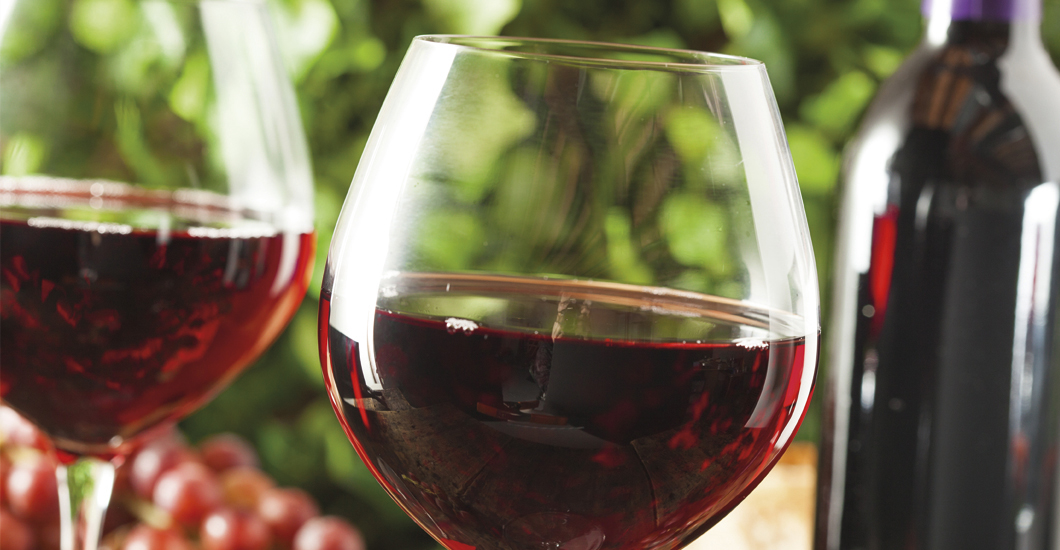Wine, a storied drink
Nutrition & fitness /

With a history stretching back almost eight thousand years, wine is rich in meaning, steeped in tradition, and full of life. Chronicles of an ancestral beverage.
Wine first appeared when we were satiating our appetites with the help of just a few tools. Long before humans patented modern methods to produce alcohol, early consumers were creating red wine in clay pots. It is unclear what this wine was used for: if it was served in banquets, during celebrations, or pagan sacrificial rites. But evidence places its birth in the Neolithic period, eight thousand years before the turn of the millennium, nestled in the mountains near present-day Iran.
Later, when the Vikings made land in what was still yet-to-be-called America, they called it “Vineland,” the land of wine. The future North America, which sprawled before those sailors, was full of grapevines. That first contact seemed a promising opportunity for wine, yet the Vikings were unsuccessful: they were unable to extract from these grapes a juice worthy of drinking.
It took the arrival of the Spaniards in the sixteenth century with their shipments of grapes brought from Europe for there to then be a good drinking wine in America. The conquistadors’ priority, however, was not one of luxurious libations, but rather that of the Eucharist: missionaries required the production of wine for their masses. Consequently, they unloaded tons of grapes and sacramental wine: a minimally fermented liquid that the priests frequently diluted with water.
With The Last Supper, Christianity provided an effective advertisement that appeared to be conceived for an ambitious campaign. The striking figure of Jesus toasting for the last time with his disciples sparked the spread of wine in the West under the religious pretext. Even the Bible described its zeal: wine is mentioned on many occasions. According to scripture, “it is a blessing that Yahweh gave humanity.” It was present in the mythical celebration of Cana where Jesus performed the miracle that would make any foodie jealous: he turned water into wine.
And in a delicious twist of irony: wine, now a symbol associated with gluttony and lust, got a major boost from the needs of the pure Catholic Church. To the Church, wine is the blood of the son of a sacrificial God. For us, wine is the broth in which we sink into the pleasure of consumption. Wine bathes the spirit with benevolence, usually as the message of the clergy. Medicine, however, also shows it is healthy: suggested for the body if you know how to drink it. Science has determined that more than three glasses is excessive. Moreover, wine whets the appetite and supports digestion; it helps treat constipation, anorexia, and other food-related conditions; wine helps avoid insomnia and calms the nerves; it helps control diabetes and is the oldest dietary drink; wine improves the function of the circulatory system and aids blood vessel circulation in hollow vessels: that is, the erection. Wine stimulates sexual desire, but is also known to be harmful: if you abuse wine, it can decrease your libido and cause asthma since it contains small amounts of sulfur. With abuse comes cramps, and in the worst case, addiction.
It seems like science never stops studying wine, nor does it tire of reporting the benefits. In March 2013, the prestigious journal Science published a study conducted in animals that confirms the good news: Resveratrol, a component in wine, activates a specific gene called Sirtuina SIRT1, which protects us from aging by regenerating our cellular energy in the mitochondria. David Sinclair, from Harvard Medical School, told Science that “never, in the history of pharmacology, has there been a molecule that links to a protein and activates it with the speed at which Resveratrol does with SIRT.”
Wine is independent in its production, it is religious and political, healthy, and sometimes harmful. But, above all, it is literary. With its seductive style, its empathy with creative spirits, wine has become a typical bookish character: into fate of habitual suspense for the world of art. Shakespeare was one of the few that scorned wine, at times ruminating on rude boozers, describe that murky water as “corroding character.” In contrast, Don Quixote and Sancho, both from the Iberian Peninsula, drank wine from time to time during their adventures, and in Cervantes’ novel wine appears on more than forty occasions. D’Artagnan also knew to toast his musketeer companions, Athos, Porthos, and Aramis, and they had a drink together before putting their sabers and muskets into action.
Neruda uncorked countless bottles of Chilean wine, and composed his Ode to Wine:
Wine, starry child of the Earth,
Wine, smooth as a golden sword,
Soft as lascivious velvet,
Spiral-seashelled and full of wonder,
amorous,
marine.
Federico García Lorca, a passionate Andalusian, went further:
I’d like to be made all of wine
and drink
myself up.
My favorite, though, is by Julio Ramón Ribeyro. In his diaries, published under the title of The Temptation of Failure, the Peruvian writer humbly demonstrates a broad knowledge of wine. It isn’t his learning, though, that is captivating, but rather the love professed for the drink. Ribeyro lived in Paris during periods of abject poverty, and to satisfy his main cravings—wine and cigarettes—he sold his most valuable copies from his library. This was a difficult exchange: Ribeyro had to choose between two prized possessions. Forced to choose, Ribeyro gave up the printed word.
Wine is independent, religious, political, healthy, sometimes harmful, and many times literary. But, above all, it is friendly. Wine inspires the sweet passion of love. Wine draws us together and unites us. So, when the learned drinker tries a foul-tasting one, when he or she crosses paths with one that does injustice to its history, they instantly, and justifiably, call it a “rough” wine.
The word “liquor” is not a generic term for alcoholic beverages: technically it refers to a group of very elaborate drinks (liqueurs), a direct legacy from alchemists and, therefore, shrouded in a veil of secrecy.
- The Ampelography Museum in Madrid holds a collection of more than three thousand types of grapes with which wine is made. The temperature must be between 15 and 30 degrees Celsius; even the slightest variation inhibits growth and maturation of each bunch of grapes. Ampelography is the study of grape types and how to cultivate them.
- Depending on the amount of sugar, wines are classified as dry, which contain very little sugar (between 1 and 3 grams per liter); medium dry (between 5 and 15 grams per liter); medium dry (between 15 and 30 grams per liter); semi-sweet (30 to 50 grams per liter) and sweet (more than 30 to 50 grams per liter).
- It is not true that the older the wine, the better. Some wines begin to spoil after five years of aging, and others after ten years. Only very full-bodied and fine wines continue to improve in the bottle after ten years.


